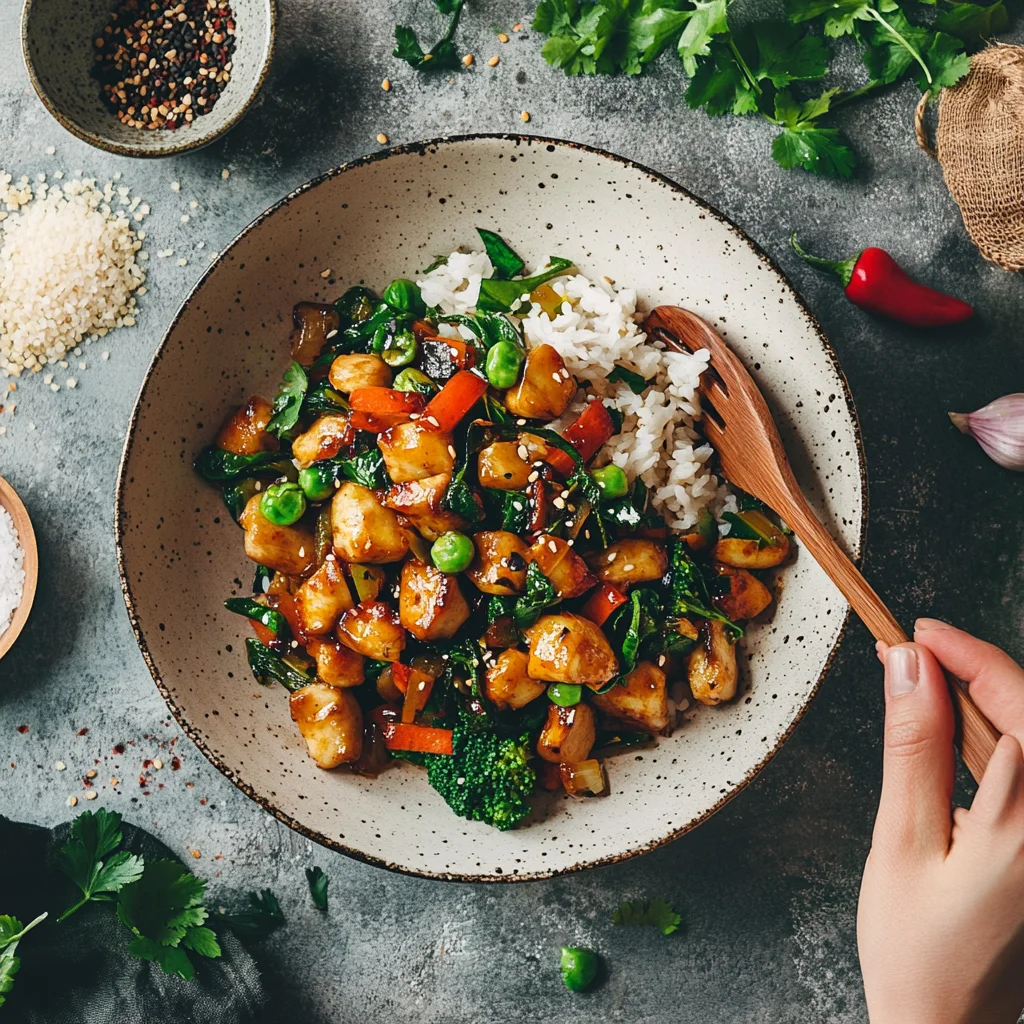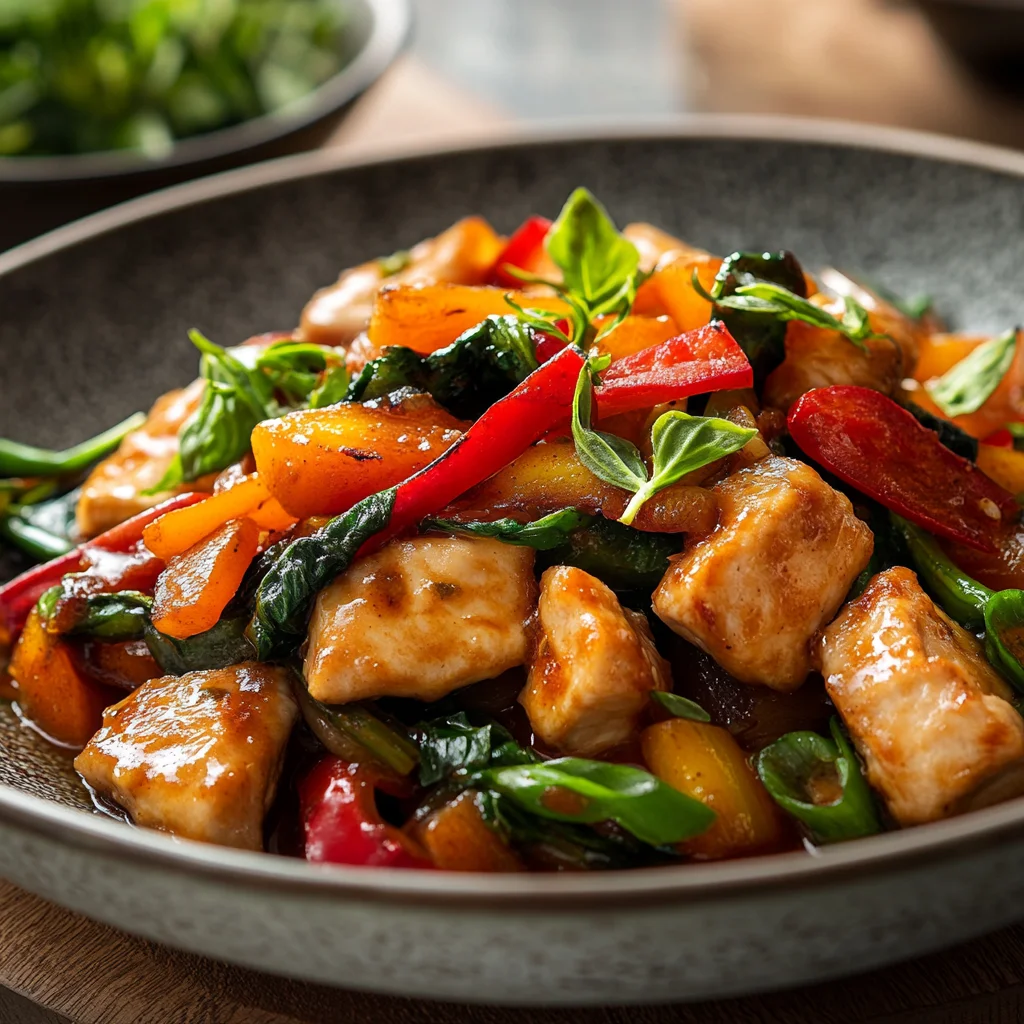 Pin it
Pin it
This vibrant spring veggie stir-fry celebrates the season's fresh produce with a quick cooking method that preserves both nutrients and crisp texture. The honey-ginger sauce brings everything together with the perfect balance of sweet, salty and spicy notes that complement rather than overwhelm the vegetables.
I discovered this recipe during my first farmers market trip of spring and it's become my go to method for showcasing whatever looks freshest each week. Even my vegetable skeptical husband asks for seconds when I make this colorful dish.
Ingredients
- Reduced sodium soy sauce: Provides savory depth without overwhelming saltiness. Be sure to use reduced sodium as regular soy sauce will make the dish too salty
- Honey: Adds natural sweetness that helps caramelize the vegetables. Choose local raw honey for best flavor
- Arrowroot starch: Creates a silky sauce texture that clings to the vegetables. It's my preferred thickener for cleaner flavor than cornstarch
- Fresh ginger: Delivers bright zesty notes. Look for firm knobs with smooth skin for easiest grating
- Garlic: Adds aromatic complexity. Choose plump firm cloves for maximum flavor
- Crushed red pepper: Brings gentle heat that wakes up the palate. Adjust according to your spice preference
- Coconut oil: Imparts subtle sweetness that enhances the vegetables. Virgin coconut oil works beautifully here
- Red onion: Provides color and sweet pungency. Select firm onions with tight dry skins
- Carrots: Offer sweet earthiness and beautiful color. Look for medium sized carrots with vibrant orange hue
- Asparagus: Brings spring freshness and tender texture. Choose thin stalks for quicker cooking and more delicate flavor
Step-by-Step Instructions
- Prepare the sauce:
- Combine soy sauce honey starch ginger garlic and red pepper flakes in a measuring cup whisking until completely smooth with no starch lumps remaining. This ensures your sauce will thicken evenly when added to the hot pan. Having your sauce ready before starting the cooking process allows you to focus entirely on the vegetables which need careful timing.
- Heat the oil properly:
- Warm coconut oil over medium heat until it becomes shimmery but not smoking. This temperature creates the ideal environment for sautéing vegetables without burning them. The shimmering surface tells you the pan has reached the perfect temperature to prevent vegetables from becoming soggy.
- Build the flavor base:
- Add onion and carrots with a pinch of salt increasing heat to medium high. Stir frequently until onions soften about 4 to 5 minutes. The salt helps draw moisture from the vegetables so they caramelize rather than steam. The carrots need a head start since they take longer to cook than asparagus.
- Add the asparagus:
- Incorporate asparagus pieces and continue cooking stirring every 30 seconds for approximately 3 to 4 minutes. You want the carrots tender enough to pierce easily with a fork while maintaining some bite and the asparagus should remain vibrant green and crisp tender. This staggered cooking ensures each vegetable reaches perfect doneness.
- Finish with sauce:
- Pour prepared sauce into the hot pan stirring constantly until it thickens to desired consistency usually 20 to 60 seconds. The continuous stirring ensures even coating and prevents the sauce from sticking to the pan bottom. The sauce will glossy and coat the vegetables beautifully when properly thickened.
 Pin it
Pin it
The freshly grated ginger makes all the difference in this recipe. I keep ginger in my freezer and grate it while frozen for the easiest preparation and the most pronounced flavor. My family especially loves when I add snow peas to this mix for extra spring flavor and delightful crunch.
Storage Tips
This stir fry keeps beautifully in an airtight container for up to 3 days in the refrigerator. The flavors actually develop and deepen overnight making leftovers something to look forward to rather than simply tolerate. For best results when reheating use a skillet over medium heat rather than the microwave to maintain the vegetables texture.
Seasonal Adaptations
While this recipe spotlights spring vegetables you can easily adapt it throughout the year. Summer brings opportunities for bell peppers zucchini and green beans. Fall welcomes brussels sprouts and broccoli. Winter allows for heartier options like cauliflower and cabbage. The sauce works perfectly with any combination making this a year round staple that never feels repetitive.
Turning It Into A Meal
Transform this side dish into a complete meal by serving it over brown rice quinoa or soba noodles. Add protein like baked tofu crispy tempeh or a fried egg on top for a satisfying dinner. The sauce is abundant enough to flavor your grain base without needing additional seasoning. This flexibility makes it perfect for family meals where everyone can customize their bowl.
 Pin it
Pin it
Frequently Asked Questions
- → Can I use regular soy sauce instead of reduced-sodium tamari?
Yes, but regular soy sauce may make the dish too salty. Adjust to taste if using regular soy sauce.
- → What protein pairs well with this stir fry?
Crispy baked tofu, fried eggs, or any protein of your choice like chicken or shrimp would complement this dish beautifully.
- → Can I make this dish gluten-free?
Absolutely! Replace regular soy sauce with gluten-free reduced-sodium tamari for a gluten-free version.
- → How do I adjust the spice level?
Reduce or omit the crushed red pepper flakes to decrease spice or add more for extra heat.
- → How do I ensure the vegetables stay crisp?
Cook the vegetables over medium-high heat, stirring frequently, and avoid overcooking to maintain their crisp texture.